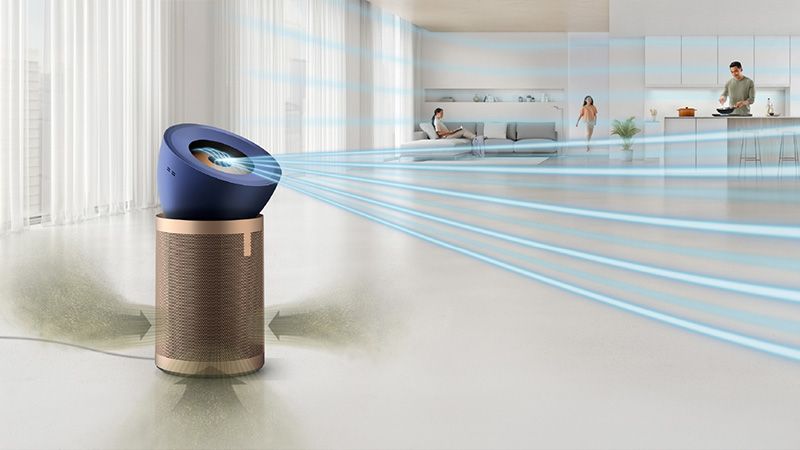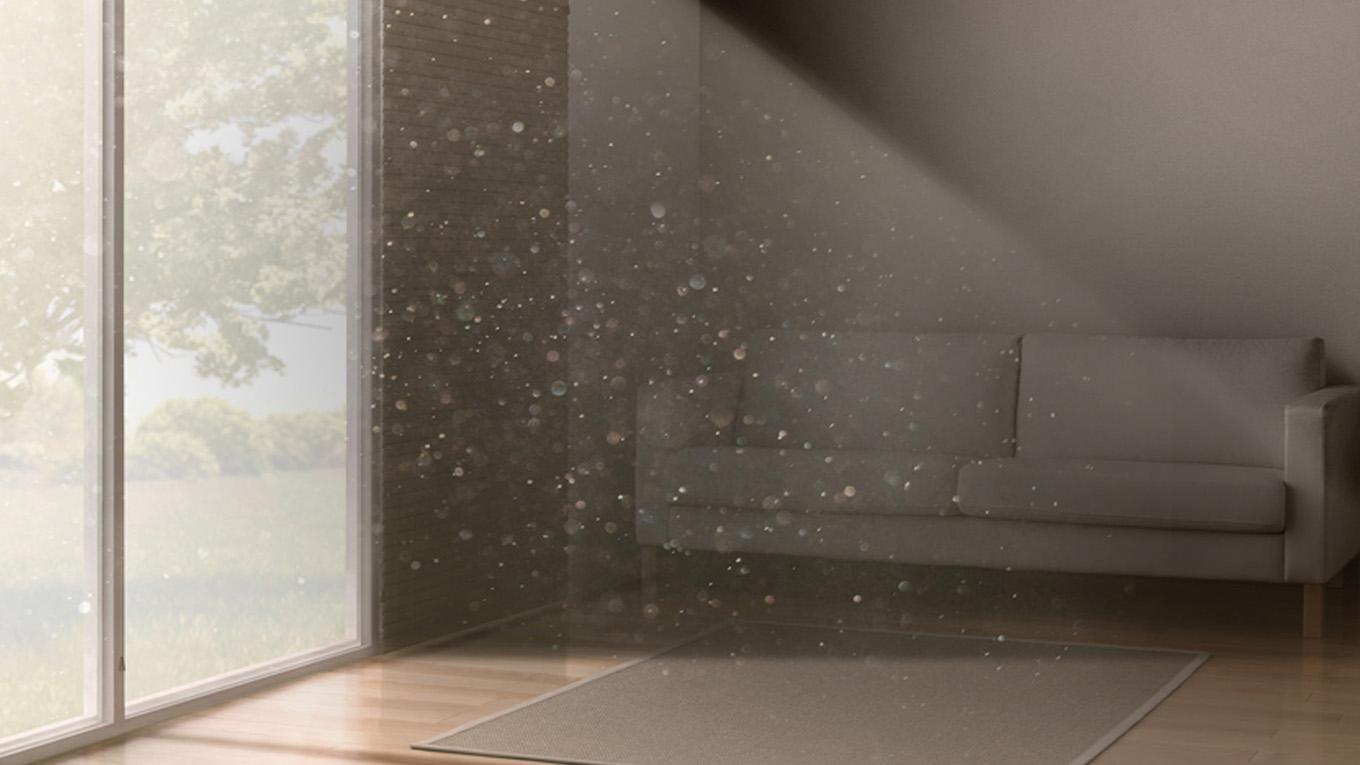Insights | Allergy | Pollen

What is an air purifier?
Air purifiers can improve air quality and circulate clean air. By trapping mould spores and odours, and removing particles including airborne irritants, they can be effective at removing the source of allergens.
It’s worth noting that the benefits will be affected by the air purifier’s specifications and filter type.
-
How do air purifiers work?
The two basic elements of an air purifier are a fan and a series of filters. The fan draws in polluted air to the filters, which capture and remove airborne pollutants, before expelling cleaner air.
Most purifiers capture particles like dust and pollen, but the best air purifiers with high efficiency particulate air (HEPA) filters can remove air pollutants as small as 0.1 microns, thanks to their multi-layer network of fine threads. Activated carbon filters can also help to remove odors.
An air purifier engineered with HEPA and activated carbon filters can work effectively against pollens, fine particles, Volatile Organic Compounds (VOCs), viruses and bacteria. Dyson purifiers can remove up to 99.95% of particles as small as 0.1 microns.⁴
-

Air purifiers for pollen allergies
If you’re one of the millions of people who suffer from pollen allergies, you’ll likely experience sneezing, congestion, a runny rose, and other uncomfortable symptoms as allergy season arrives.
Pollen is a fine powder made up of tiny particles. It’s released during the early spring and summer months by plants, trees and grasses as part of their reproductive cycle. Pollen causes a common allergic reaction known as hay fever, which since it occurs at particular times of the year, is also known as seasonal rhinitis.
Rather than opening windows on warm days, try using an air purifier to clean your indoor air, keep you cool, and capture ultrafine dust and allergens. Using an air purifier with a HEPA filter between March and September will help remove pollen allergens from the air you breathe.
Air purifiers for pet allergies
Our furry friends can bring plenty of joy, but also a few microscopic surprises into the home, including pet dander, pollen, and viruses. What’s more, you may find that cuddling your pet leaves you sneezing, coughing or rubbing your eyes. It’s estimated that pet dander allergies affect up to 20% of people around the world.⁵
It’s possible to remove the particles that trigger allergies caused by pets using a good air purifier. Approximately 75% of cat dander particles are 5-10 microns in size, and 25% are 2.5 microns or smaller.⁶
Air purifiers for dust allergies
Dust mites can be a major indoor trigger for people with allergies and asthma. Fortunately, an air purifier effectively removes dust, including dust mite allergens, and can help you breathe easier.
Most exposure to dust mite allergens occurs while sleeping and when dust is disturbed during bed-making. An air purifier in your bedroom can help trap these allergens before they have a chance to settle.
Tackle allergies with a Dyson air purifier
Allergies can be uncomfortable, but using a HEPA air purifier can help trap pollutants and reduce airborne allergens – giving you and your family cleaner indoor air.
Explore the Dyson air treatment range
-
Purifiers
Circulates purified air around the whole room. Captures gases², allergens and 99.97% of particles as small as 0.3 microns.
-
Purifier humidifiers
Automatically humidifies and purifies. Engineered to deal with pollution and dry air.
-
Fans and heaters
Control your temperature with fast heating and high-velocity cooling.
Read more
-
Insights | Air quality | Air purifier
-
Insights | Air quality | Air purifier
-
Discover Dyson
¹Hulin et al, Respiratory Health and Indoor air pollutants based on quantitative exposure assessments, European Respiratory Journal, October 2012.
²Klepeis, N. E.; Nelson, W. C.; Ott, W. R.; Robinson, J. P.; Tsang, a M.; Switzer, P.; Behar, J. V; Hern, S. C.; Engelmann, W. H. The National Human Activity Pattern Survey (NHAPS): A Resource for Assessing Exposure to Environmental Pollutants. J. Expo. Anal. Environ. Epidemiol. 2001, 11 (3), 231–252.
³Bumbacea et al (2020). Mite allergy and atopic dermatitis: Is there a clear link? (Review), Experimental and therapeutic medicine, 20 (4).
⁴Tested for filtration efficiency at 0.1 microns (EN1822, ISO29463).
⁵Chan, S and Leung, D (2018), Dog and Cat Allergies: Current State of Diagnostic Approaches and Challenges, 10 (2), 97-105. Available at: https://www.ncbi.nlm.nih.gov/pmc/articles/PMC5809771/
⁶Luczynska CM, Li Y, Chapman MD, Platts-Mills TA. Airborne concentrations and particle size distribution of allergen derived from domestic cats (Felis domesticus). Measurements using cascade impactor, liquid impinger, and a two-site monoclonal antibody assay for Fel d I. Am Rev Respir Dis. 1990 Feb;141(2):361-7. doi: 10.1164/ajrccm/141.2.361. PMID: 2301854.
Press contacts
Canada
Email us at CAN.PR@dyson.com
Social media
Twitter: @askdyson
YouTube: youtube.com/Dyson
Facebook: facebook.com/dyson
Instagram: @dyson, @dysonbeauty
LinkedIn: Dyson







